Marine mammals are specialized animals that make the sea their home for all or part of their life. They are classified into four distinct taxonomic groups: cetaceans (whale, dolphins and porpoises), pinnipeds (seals, sea lions and walruses), fissipeds (sea otters and polar bears) and sirenians (manatees and dugongs).
Each taxonomic group evolved from different groups of land mammals. But despite their different origins, they evolved similar features. This is an example of convergent evolution, which is when different species develop similar structures because they have similar lifestyles. This is most evident in the unique adaptations that allow marine mammals to cope with the extreme temperatures, depths, pressures, darkness and density of the marine environment.
Marine mammals can be filter feeders (such as baleen whales), apex predators (orcas) or herbivores (manatees).
Take a virtual dive into the cold waters of the North Pacific!
Cetaceans are completely aquatic mammals and cannot survive on land. They feed, mate, calve and suckle their young in the water. There are over 70 different cetacean species in the world.
Because their bodies are constantly supported by water, they are among Earth’s largest species. Their large size may be a unique adaptation relating to food storage or heat conservation in cold water, too. Other adaptations include:
Baleen whales (Mysticeti) are filter feeders which include humpback, blue, minke, fin, sei and bowhead whales. They are very large animals and must consume huge quantities of prey. They have rows of baleen plates made of keratin (the same substance that makes up our hair and fingernails). They forage for zooplankton and small fish by skimming or gulping huge amounts of prey and water, forcing the water back out their mouths and past their baleen which acts as strainers to trap the prey on the inside so they can be swallowed.
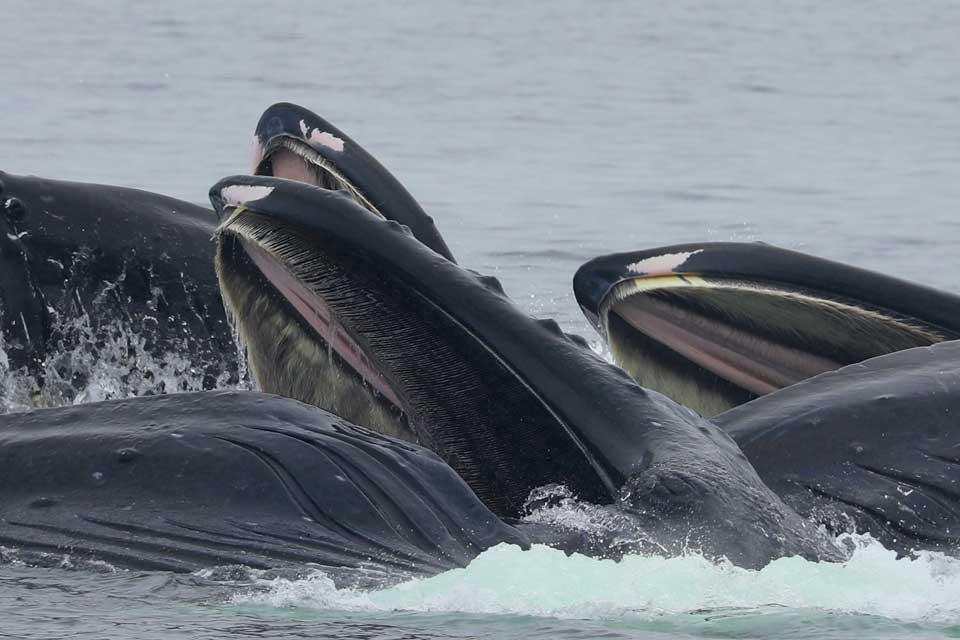
In plankton eaters such as North Pacific right whales, the baleen is silky and fine for filtering zooplankton. In humpback whales, which subsist on krill and fish, the hair is much coarser.
Some whales such as humpback whales herd krill and small fish, such as herring, by blowing curtains of bubbles around them, which traps the fish within a “net.” The whales then swim up inside the net and engulf the trapped fish. This method of feeding is called bubble-net feeding.
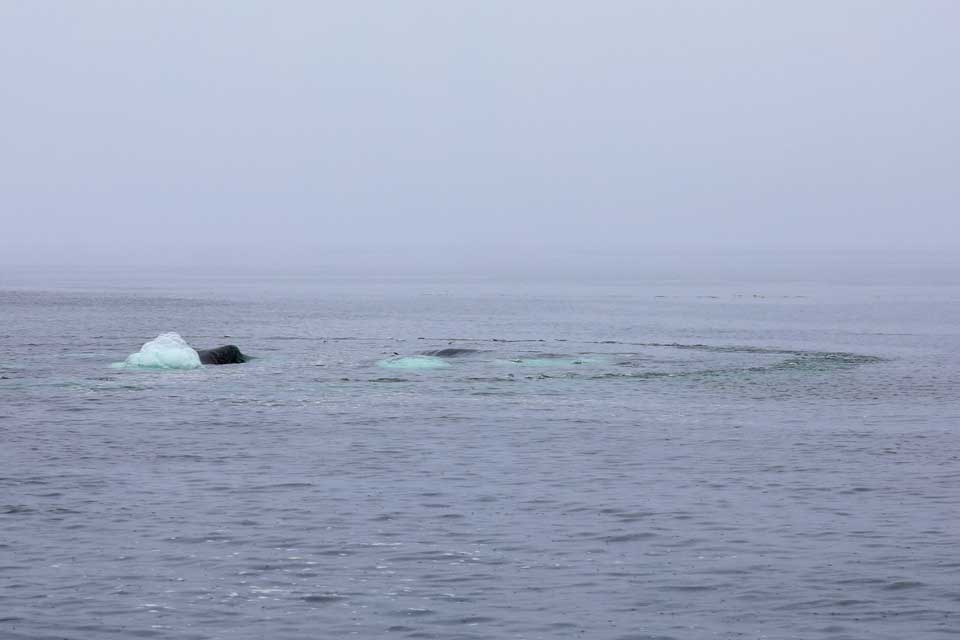
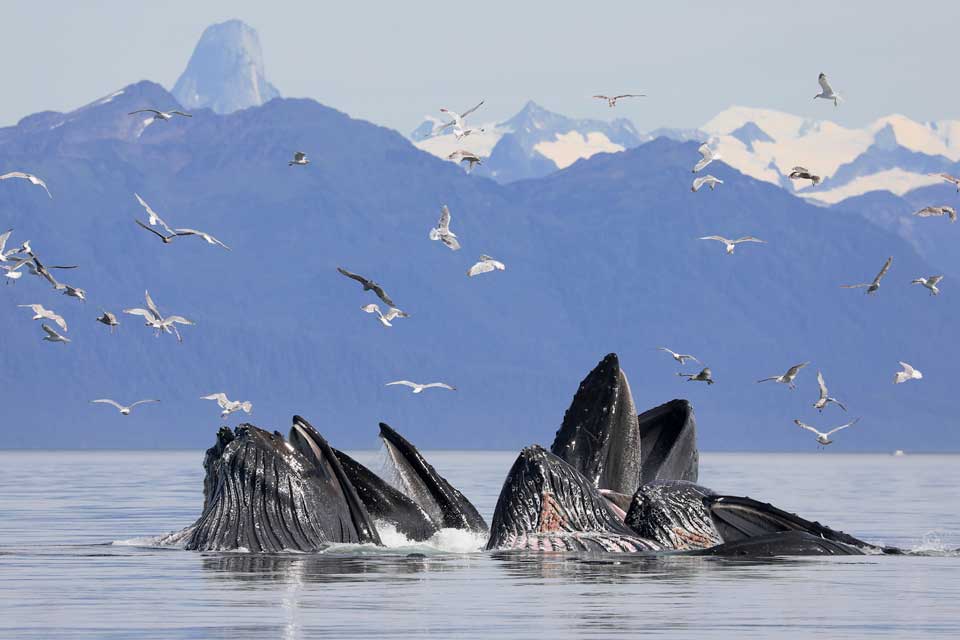
Baleen whales have two nostrils. They are not known to use echolocation.
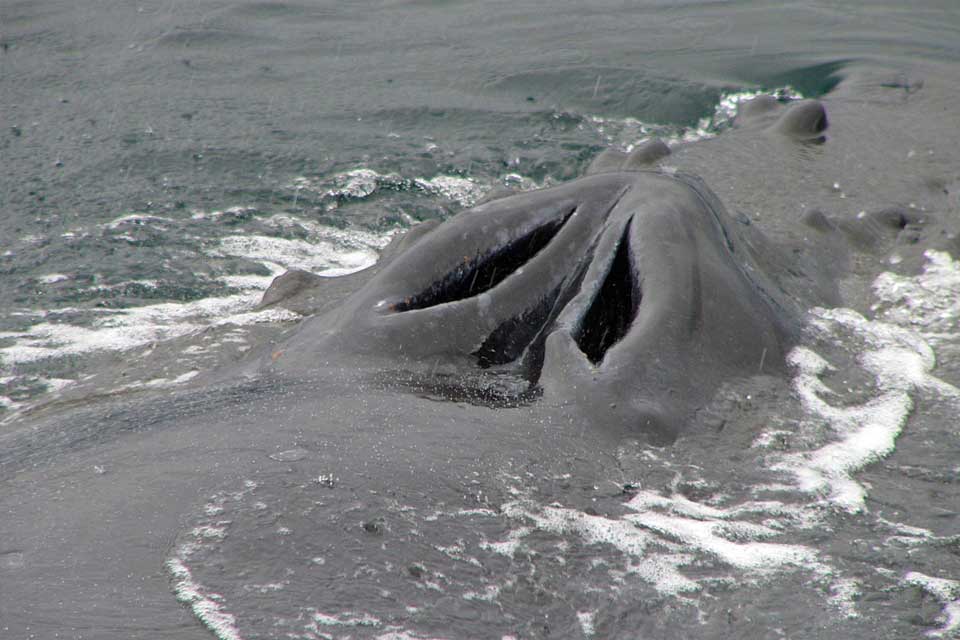
Fun Fact: Baleen-feeding whales do not need to dive deep and seldom venture below 300ft.
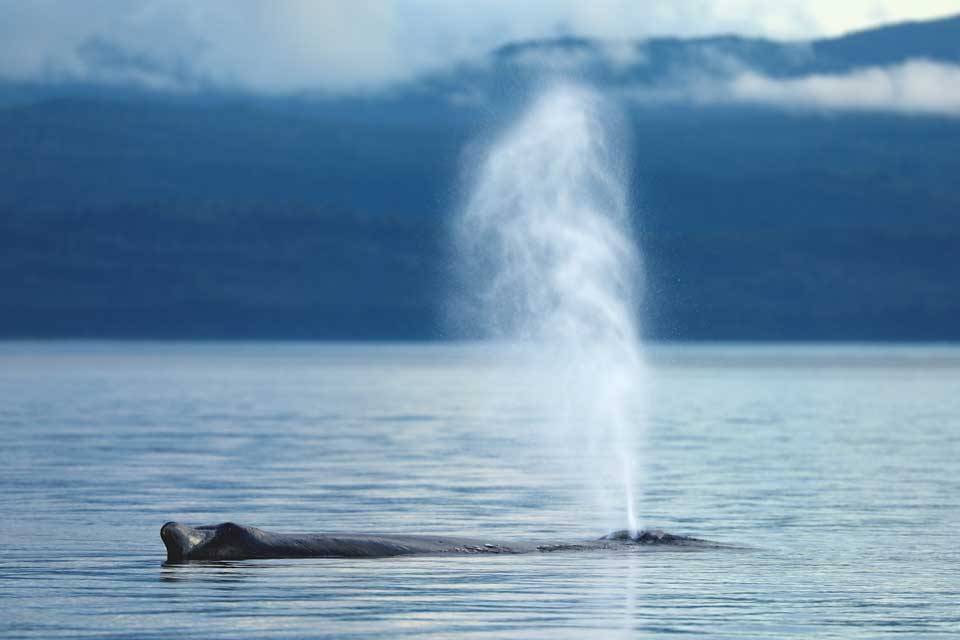
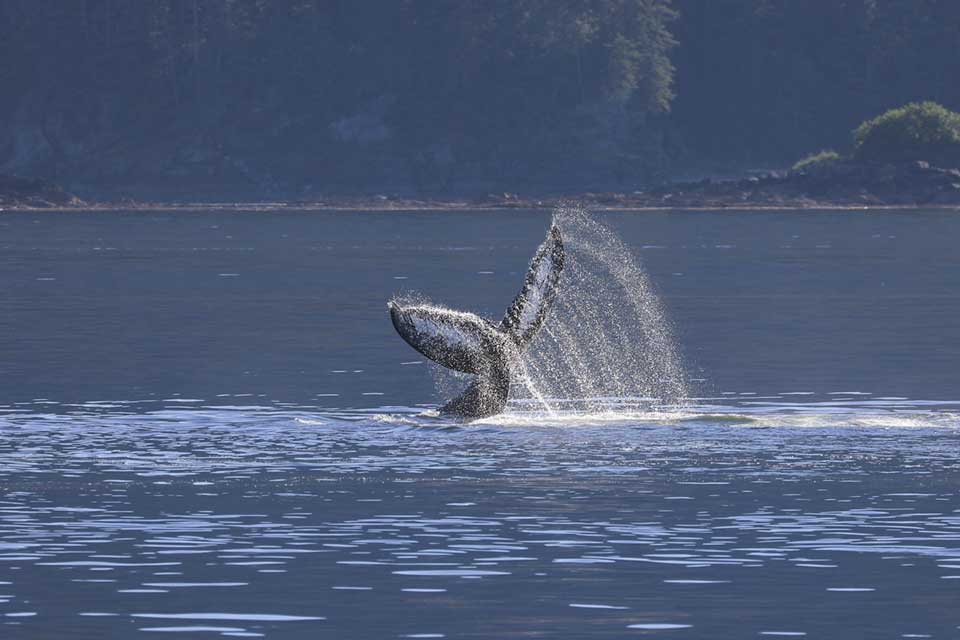
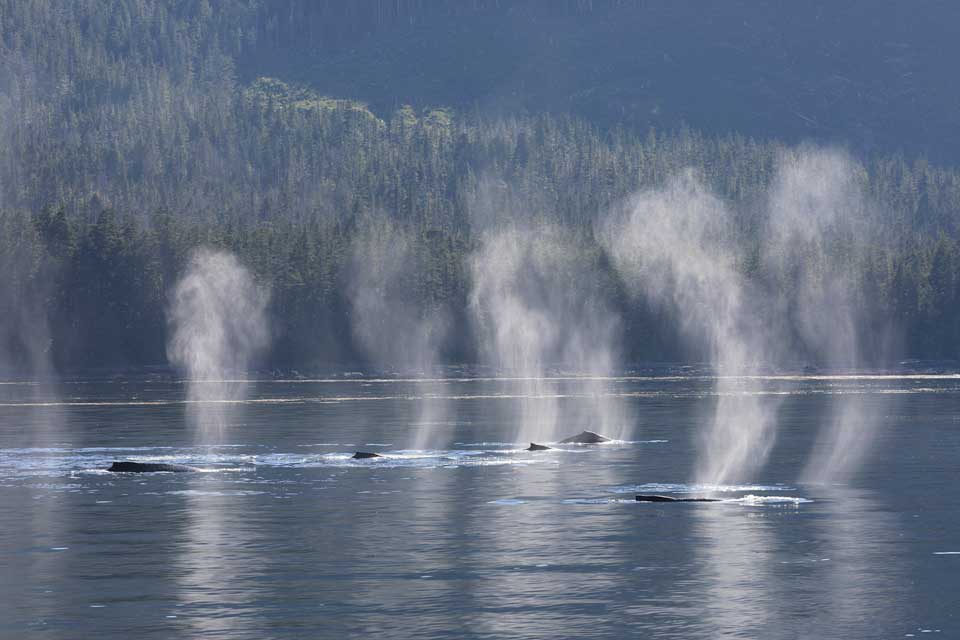
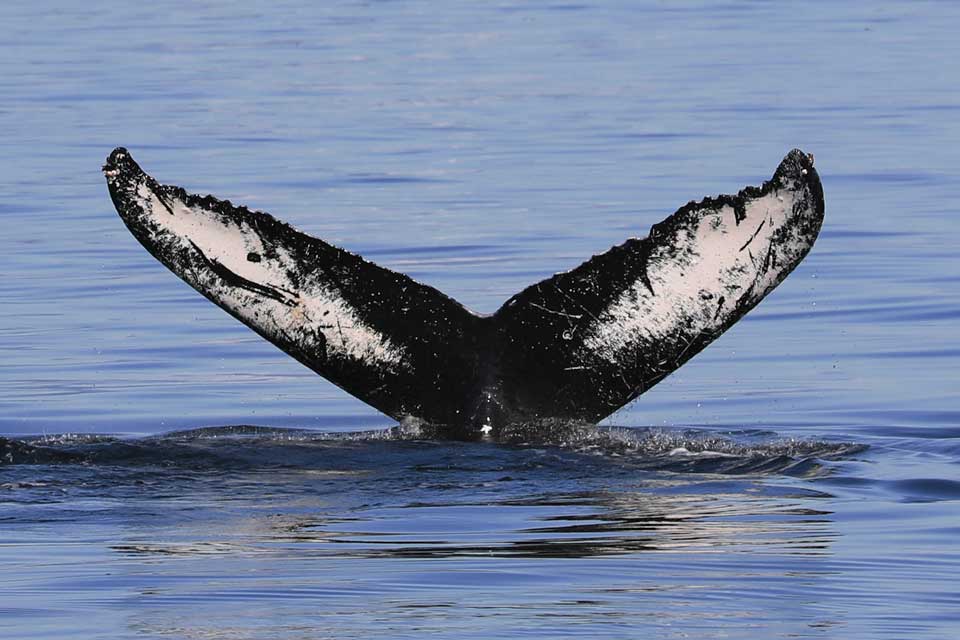
Toothed whales (Odontoceti) have teeth that are used to strain or grasp prey, primarily fish and squid. This suborder includes sperm whales, beaked whales, orcas, dolphins, belugas, narwhals and porpoises.
Toothed whales are generally meat eaters and can eat larger prey such as fish (salmon and cod), and some toothed whales such as orcas even prey upon other marine mammals including porpoises, seals and sea lions.
Toothed whales have a single nostril, or blowhole.
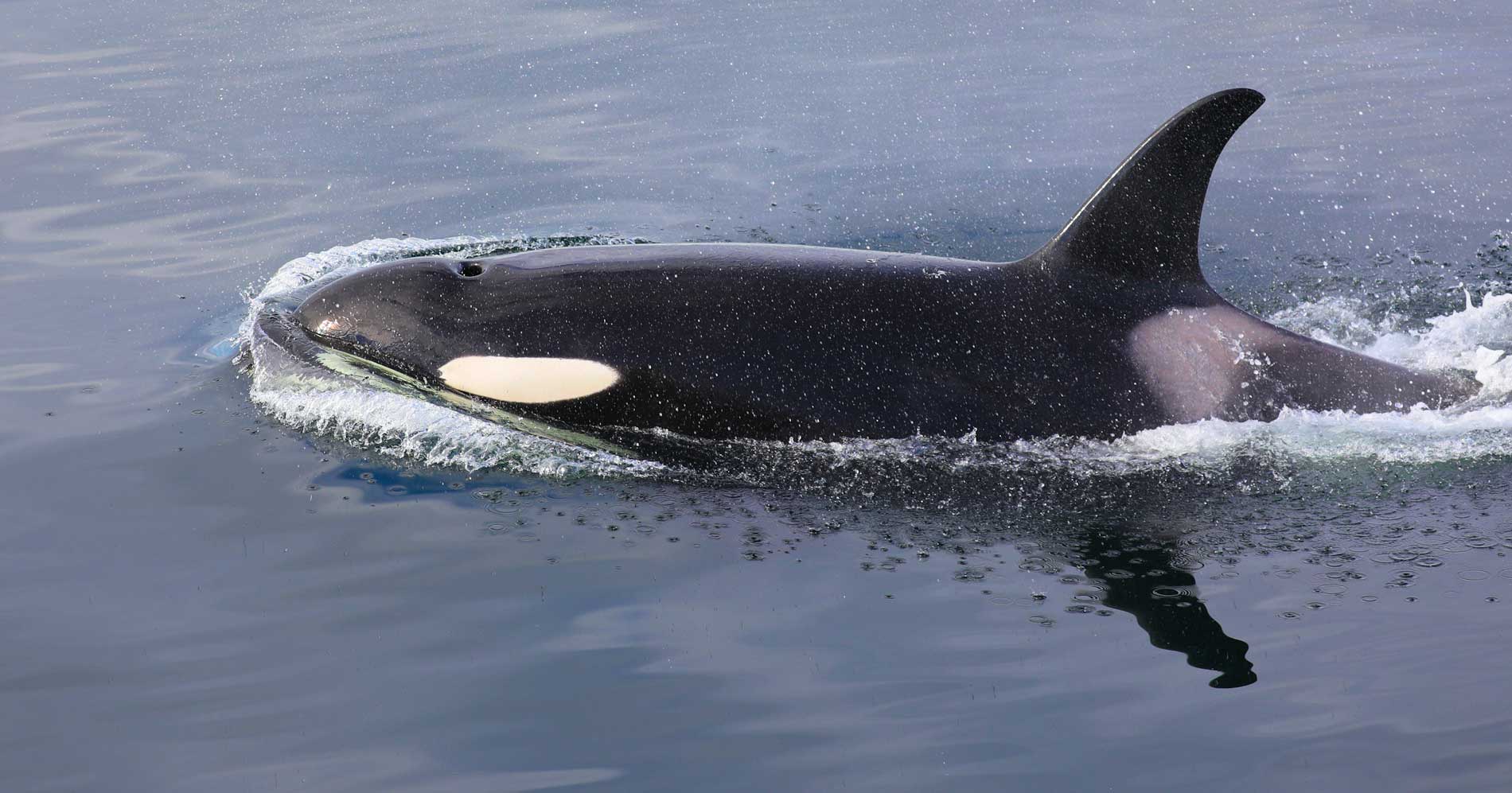
They use echolocation, or sonar, to find prey. They emit sounds that bounce off solid objects and return to them (similar to an echo) which helps them “see” their surroundings.
Toothed whales are social and generally live in groups or pods (such as orcas).
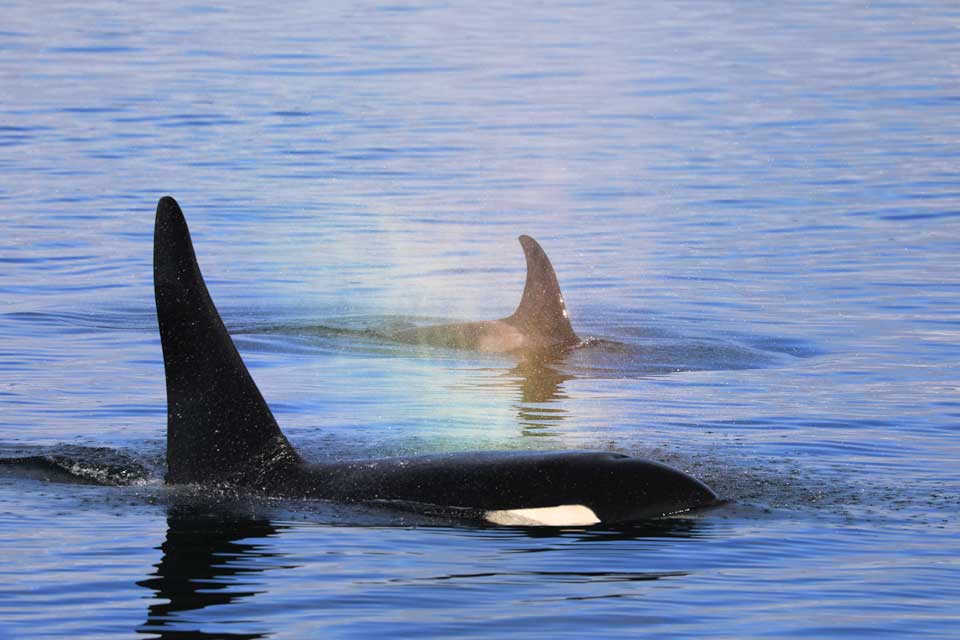
Fun Fact: Toothed whales can generally dive down to 900 feet, but sperm whales can stay under for up to 90 minutes and dive deeper than 8000 feet. They are the largest toothed whale and the deepest diving cetacean.
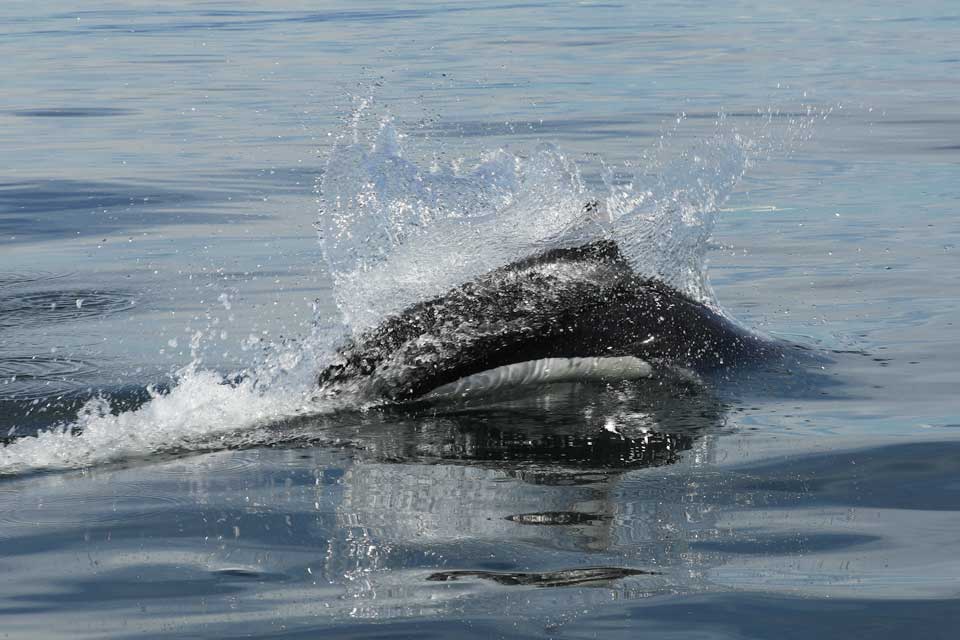
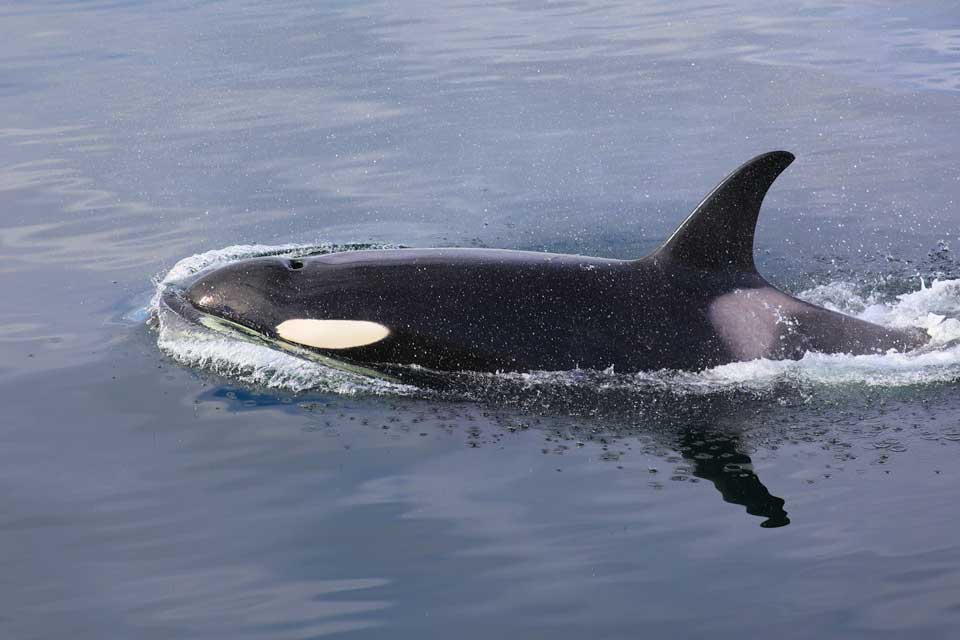
Pinnipedia means fin-footed. They are semi-aquatic carnivores that use their flippers to move both in the water and on land or ice. They have adapted to amphibious marine existence and are predators that feed mostly on fish and squid. While they forage at sea, most come ashore or onto ice at some time during the year to mate, give birth, suckle their young and to molt.
Pinnipeds are adapted to exist both in marine and terrestrial environments:
Fun Fact: Some pinnipeds such as seals are capable of long, deep repetitive dives to depths of 4500 feet and up to 2 hours!
Phocids are earless (or “true”) seals and include harbor seals and elephant seals. They have no visible ear flaps (called pinnae). Other characteristics that define Phocids include:
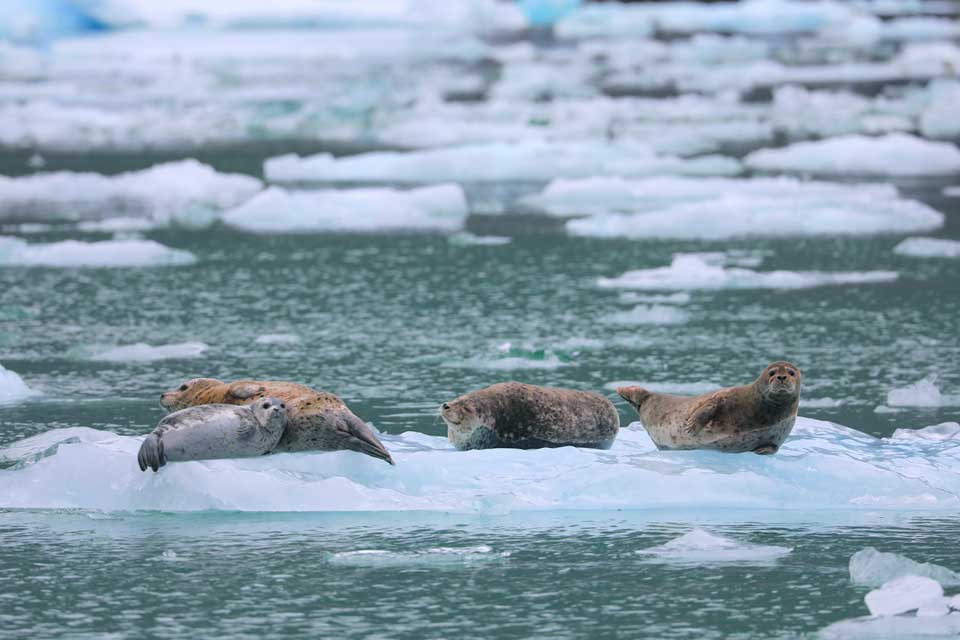
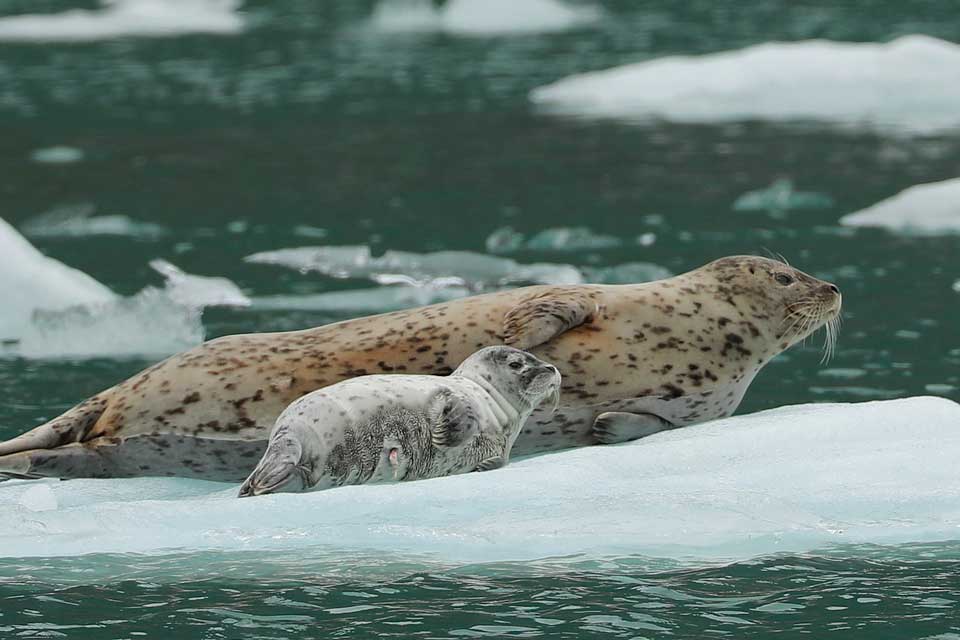
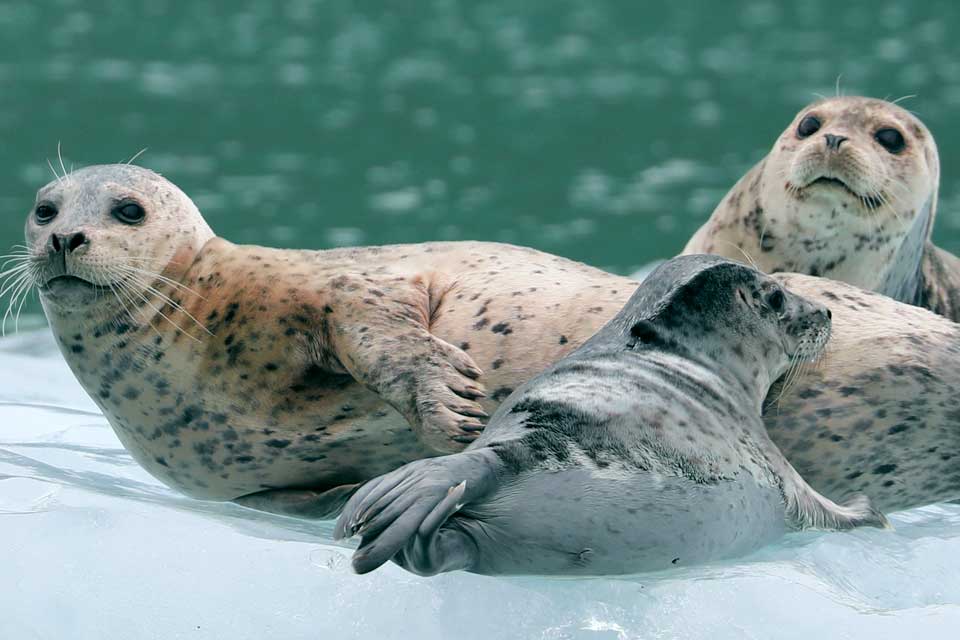
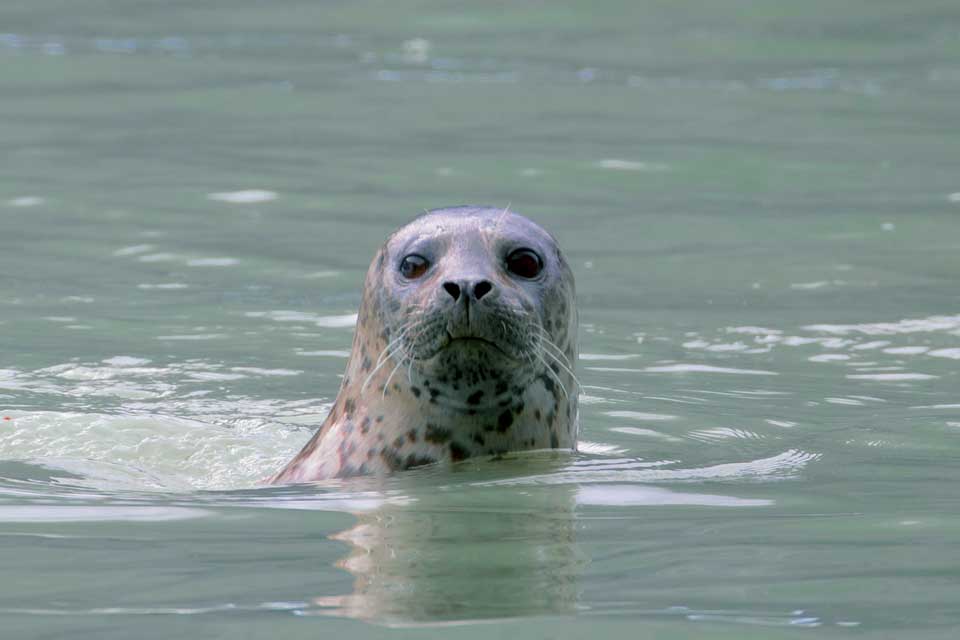
Otariids are considered the eared seals, which are sea lions and fur seals. They have visible ear flaps (pinnae). Other characteristics include:
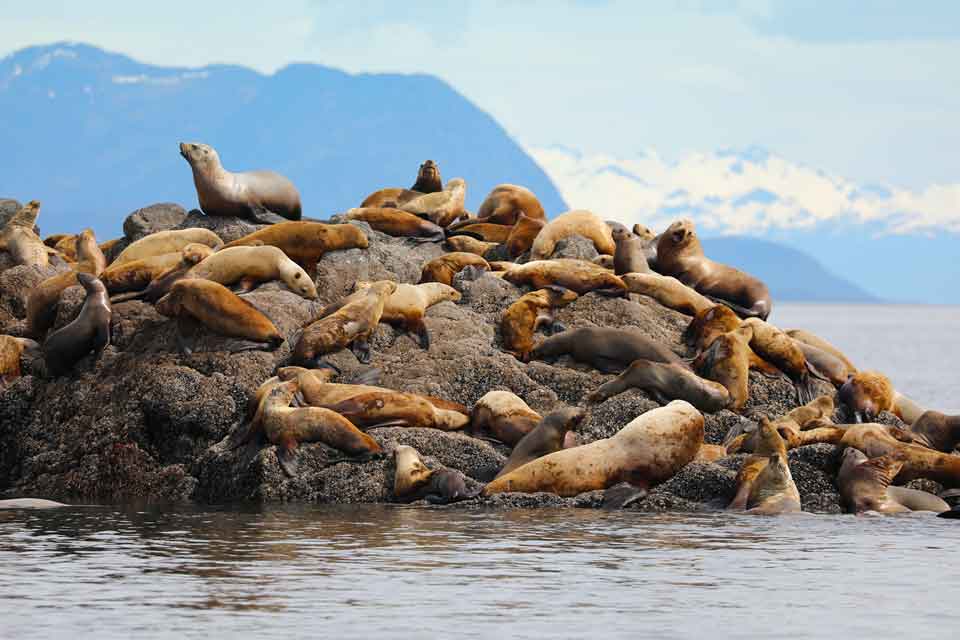
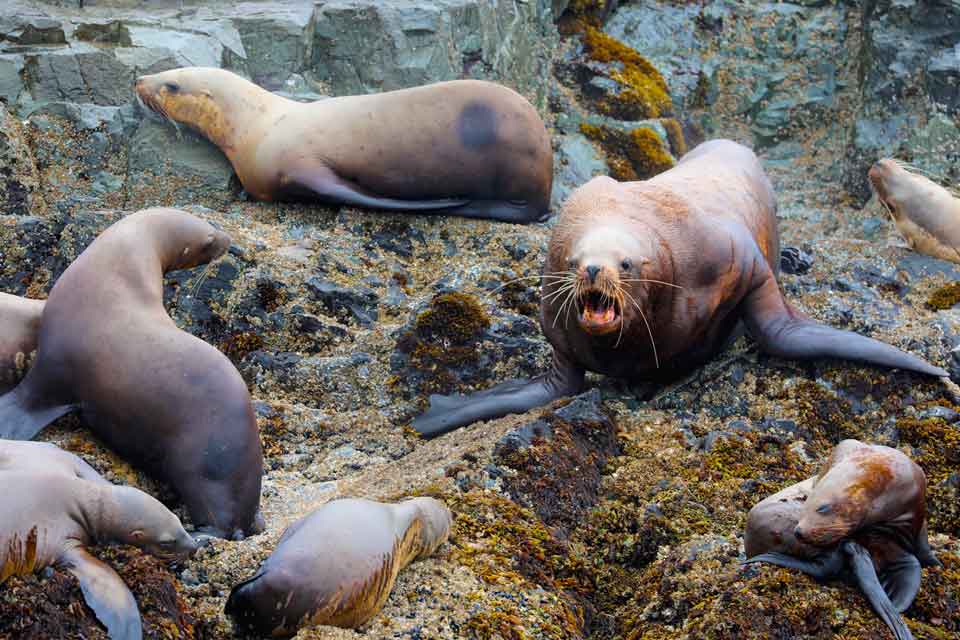
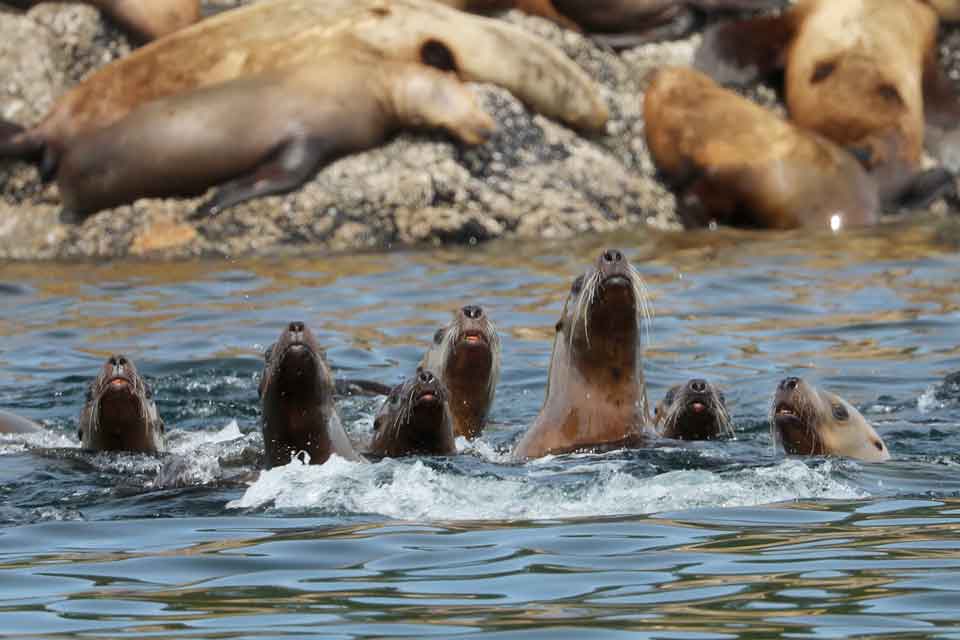
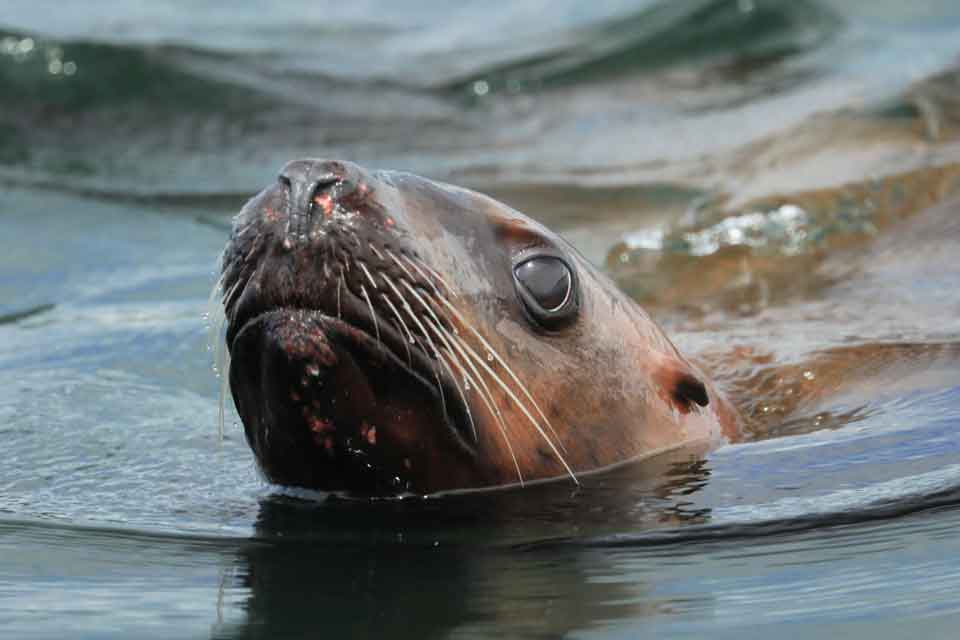
Odobenids are walruses. They have a combination of phocid and otariid traits:
Fissipeds are split-footed. They spend all or some of their time on land but hunt for food in the water. They are relatively new to marine environment and lack many physiologic adaptations to marine life but are considered marine mammals because of the roles they play in marine environment. In the North Pacific, the fissipeds include sea otters and polar bears.
Fissipeds are related to terrestrial carnivores, like weasels and bears. Other Fissipeds include Felidae (cats) and Canidae (dogs).
Sea otters are part of the weasel family (Mustelidae) and live primarily a marine life. They are well adapted to life on the water:
Fun Fact: Sea otters can dive for 5 minutes and up to 180 feet!
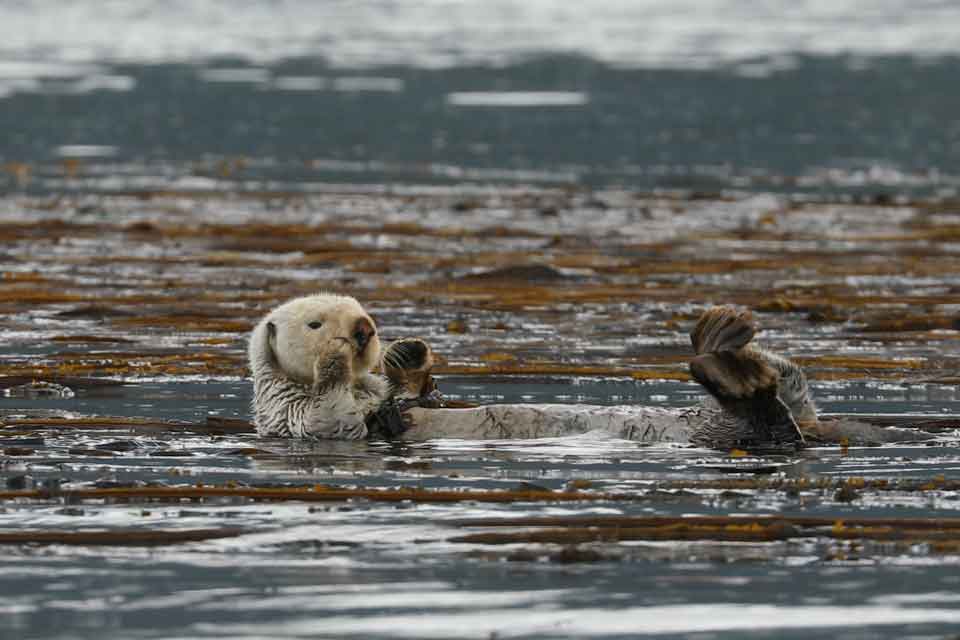
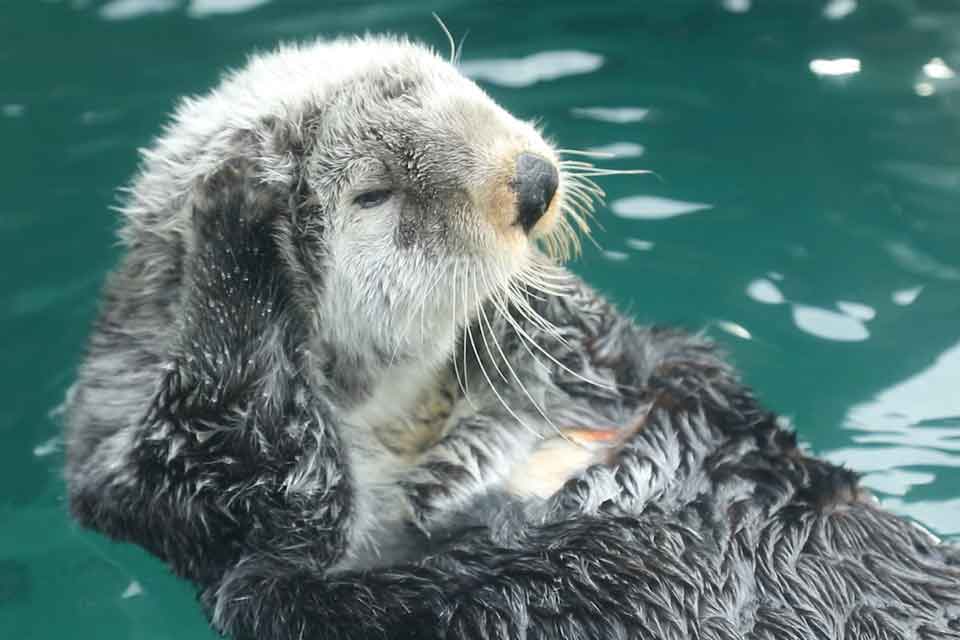
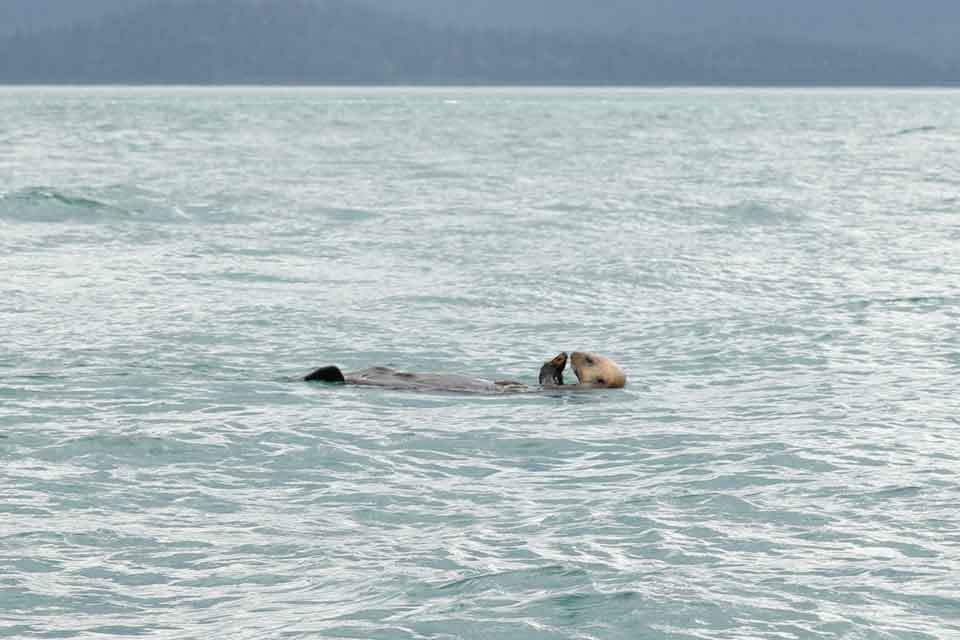
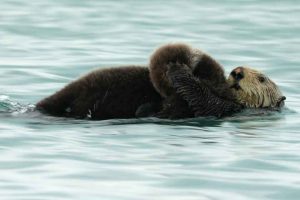
Polar bears are part of the bear family (Ursidae) and spend most of their lives associated with marine ice and waters. They have unique adaptations:
Fun Fact: They are thought to have diverged from a Siberian population of Brown bears less than 1 million years ago.
Sirenians are an order of aquatic, heavy boned and herbivorous mammals (manatees and dugongs) that inhabit coastal areas, estuaries and rivers. They are named after the sirens, which are mythical Greek sea nymphs and mermaids.
Current day dugongs are related to the extinct Steller’s sea cow of the Bering Sea, which was discovered in 1741 and extinct by 1768.
The North Pacific ocean temperatures are COLD. Below 200 meters the water temperature approaches freezing. Marine mammals are adapted to deal efficiently with these temperatures.
To dive deeply, marine mammals must be able to go a long time without breathing and keep their vital organs supplied with oxygen. Some mammals will stay down as long as 90 minutes, which is a long time to go without a breath! They use oxygen more efficiently and are better at absorbing oxygen from the air and storing it in their blood and muscles.
Nitrogen is 70% of air volume, and dissolves much better in high pressures such as at ocean depths. Therefore, blood picks up nitrogen while diving. If the pressure is suddenly released (by swimming to the surface quickly), some of the nitrogen will not stay dissolved and will form tiny bubbles in the bloodstream—like opening a can of soda, though that is actually carbon dioxide. The bubbles can block the flow of blood to the brain and other organs or lodge in the joints, which is a condition called the bends, or decompression sickness. Marine mammals don’t get the bends because they have adaptations that prevent nitrogen from dissolving in the blood:
Marine mammals have acute tactile senses and also use a range of communication methods:
Marine mammals adapt the way they swim or are buoyant to help offset the dense medium (salt water) that they travel within. Drag is reduced by hydrodynamic body forms (take for instance the streamlined bullet shape of a seal) and appendages are modified for maximum propulsion and minimal drag (for example, large whale fins). Cetaceans have smooth, almost hairless skin reduces drag during swimming.
Many marine mammals are threatened or endangered, largely due to historical hunting. Fur pelts were a valuable commodity, and people used the oil from whale blubber for burning lamps, making cosmetics, or making perfumes. Since 1986 there has been a ban on commercial hunting of whales, but some countries continue whaling. Some Alaska natives and other indigenous tribes can legally hunt marine mammals for subsistence and with strict quotas.
Most current threats include: